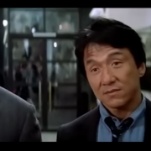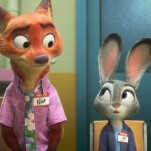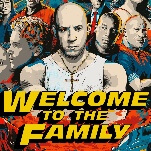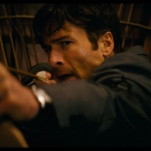To live in a major metropolitan area is to be confronted with abject poverty on a regular basis. Actually, “confronted” might be too strong of a word for something many people process only in passing, as part of the texture of the city or a fixture of their daily commute. Callous as it sounds, it’s easy to get desensitized to the exposed sorrow of the homeless; one learns to ignore, or at least to take in stride, the suffering of those who have nothing. Stray Dogs, a 138-minute epic from master Taiwanese director Tsai Ming-Liang, fights tooth and nail against such turning of blind eyes. Making society’s invisible bottom rung visible again is the noble agenda; though set in the streets and malls and vacant residencies of Taipei, the film could really be a glimpse into any densely populated urban environment. Desperation of this kind knows no single nationality.
Tsai, who made the relatively accessible What Time Is It There? about a decade ago and a string of increasingly inaccessible films in the years since, has a habit of holding an image for what feels like a small eternity. Stray Dogs takes that strategy to a new extreme, its longest shots reaching for the double-digit minute mark. But while some may find the film a tough sit, it is not impenetrable. Looking beyond its epic long takes, Tsai’s latest is small and human and primal—a howl from the gutter, and a survival story about life on the fringe, in which a family of four ekes out an existence one day and scavenged meal at a time.
Whereas some of the director’s efforts traffic in symbolic abstraction and droll comic relief, Stray Dogs is as stripped bare as the water-damaged abandoned building its characters eventually call home. The father, played by aging Tsai perennial Lee Kang-Sheng, works as a “human billboard,” standing at busy intersections, in pouring rain or otherwise. (Bitter, bitter irony: He’s advertising for a real-estate company but can afford no shelter of his own.) His latchkey kids, real-life siblings (and Tsai godchildren) Lee Yi-Chieh and Lee Yi-Cheng, spend many of their afternoons alone. Sometimes they accompany their mother to work; for reasons that are difficult to discern, Tsai casts three different actresses in the role. No other speaking parts emerge. Few other humans even pass through Tsai’s static, carefully arranged frames. Poverty is depicted as an isolating force.
Basically plotless, at least if one describes plot as progress for the characters, Stray Dogs gains loose structure from the family’s various relocations. The Lees, as they’ve been named, live day to day, and the film unfolds as a series of snapshot vignettes of what they call a life—scrounging for sustenance, climbing into trees to sleep, washing themselves in a public restroom, etc. While the children adapt to their unstable circumstances, their innocence not completely claimed by misfortune, the father slips further into despair. Lee, who’s transformed into a soulful actor over the years, belts a devastating lament in tight close-up. He also rescues, through the sheer power of his conviction, a scene that might otherwise have veered into self-parody—one in which the anguished dad caresses, suffocates, and sobbingly devours a doll his children have made out of a head of cabbage.
The plight of this struggling family unit weighs more heavily on the heart with each passing minute, making Stray Dogs the rare marathon-length art film that seems to grow less oppressive the longer it goes on. Yes, some of the more protracted shots may try a viewer’s patience, with Tsai apparently testing just how long he can go without cutting before the audience outright revolts. But there’s method to such single-take madness. This is, after all, a movie about not looking away, so why should the director? Tsai closes on a moment of all-or-nothing transcendence, throwing down the gauntlet with an endless, climactic stare into the void. Failing to grasp the particular significance of the last image doesn’t preclude one from being bowled over by its naked compassion. Stray Dogs is a fiercely humanistic movie, one that champions art as a beacon of light in the darkness.









































